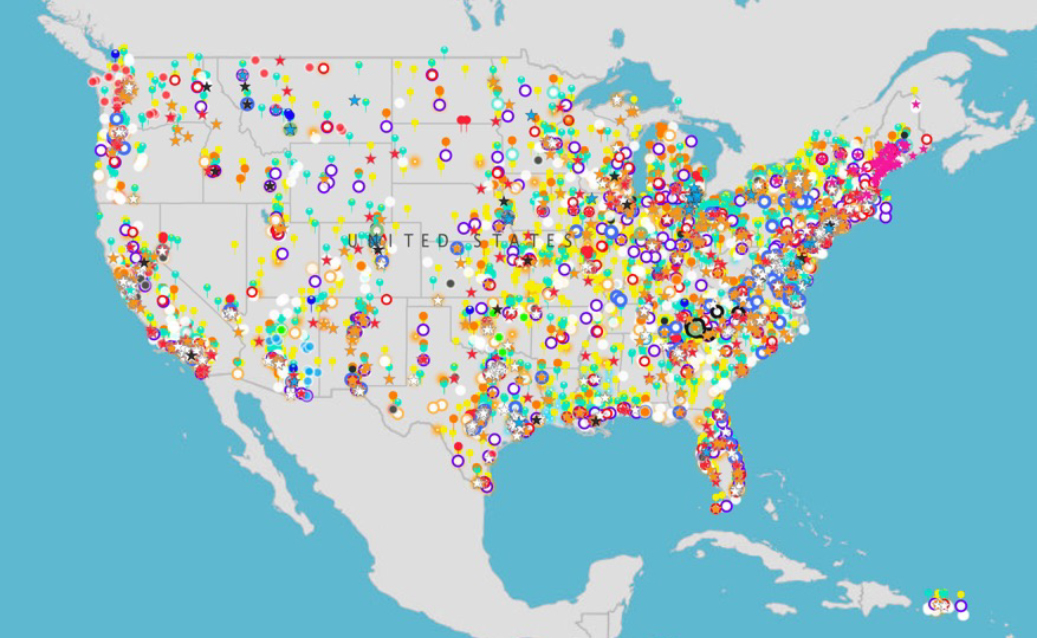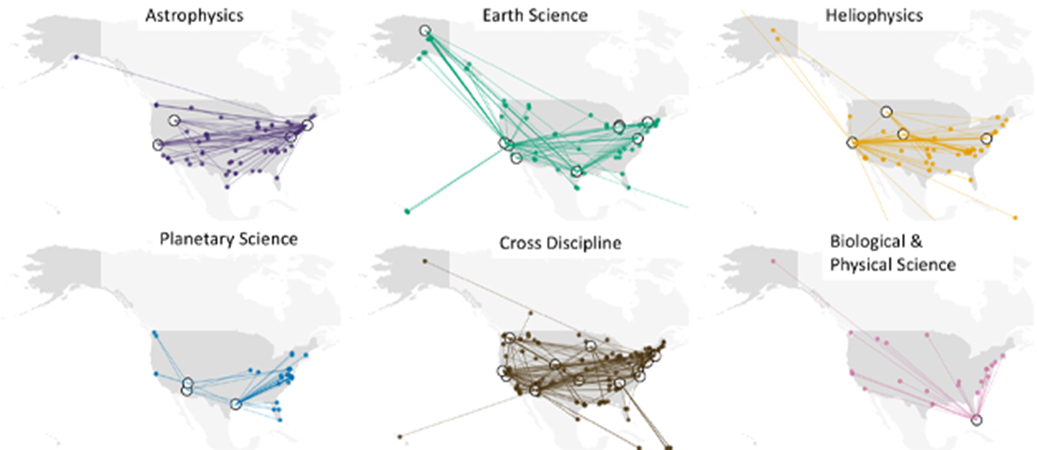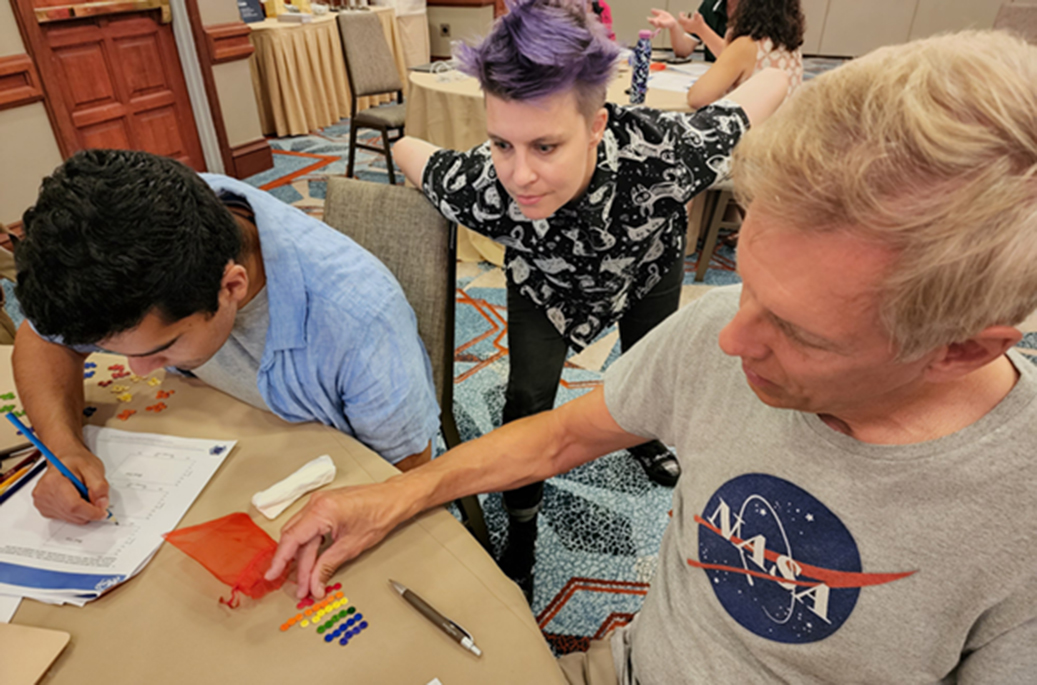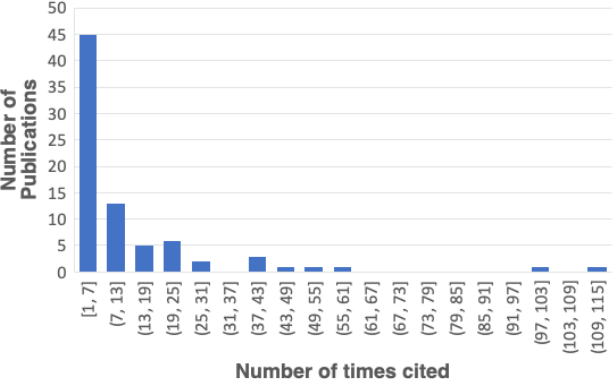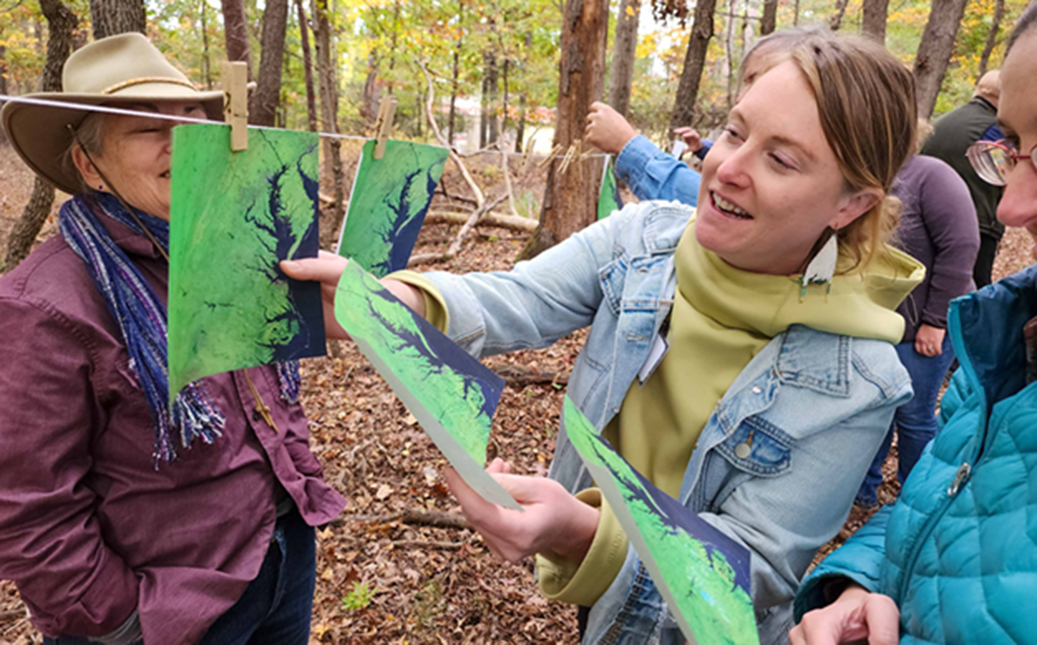Note: This historical content may contain outdated information or references that may not reflect current policy or programs.
Introduction
For many years, The Earth Observer ran a regular NASA Earth Science Education and Public Outreach Update column, the last of which appeared in the May–June 2017 issue of The Earth Observer. At that time, NASA Science Education communications had moved to Science WOW!—a Weekly On Wednesday’s email listserv. Science WOW! ran from July 2016–April 2018, at which time it, too, was discontinued based on a review of audience metrics. In the more than five years since Science Wow! was discontinued, however, NASA science education has not gone dark. In fact, there is a vigorous community—called the Science Activation (SciAct) program—working to share NASA science with learners of all ages—see Photo 1. In 2022 alone, SciAct facilitated over 50 million learner interactions with NASA science, content, and experts.
The following article briefly summarizes the history of NASA’s science education and outreach activities leading up to the establishment of NASA’s SciAct program. It then describes the evolution of SciAct, followed by the variety of ways SciAct helps learners get “activated.” It ends with a list of the SciAct programs that are directly relevant to Earth science.
History of NASA’s Science Outreach and Education Activities
Prior to 1993, NASA science education and public outreach activities took place on more of an ad hoc basis in which individual NASA centers and missions responded to regional needs. From 1993–2014 NASA Science education and public outreach (EPO) activities were aligned to individual missions. Under that model, each science mission was directed to devote 1% of its total budget to EPO activities. While this model resulted in impactful work tied to NASA mission science, it ultimately led to silos, with each mission operating separately and sometimes in competition with one another. This inevitably led to duplication of efforts.
As a result, the White House Office of Management and Budget (OMB) zeroed out EPO funding for individual missions beginning with Fiscal Year 2015, requiring Science Mission Directorate (SMD) leadership to come up with a new approach. The result was SciAct—a competitive program that would work to collaboratively meet the needs of learners in all 50 states. SciAct has required a culture change from the previous model, which has taken time to take hold. The ultimate Vision of the program is: To increase learners’ active participation in the advancement of human knowledge.
SciAct focuses on four top-level objectives to advance this vision. They are to:
- enable STEM education;
- improve U.S. science literacy;
- advance national education goals; and
- leverage through partnerships.
The SciAct Impact Reports for 2021 and 2022 detail this vision and progress toward achieving these goals.
Evolution of NASA’s Science Activation Program
SciAct began in 2015 with a stand-alone Cooperative Agreement Notice (CAN) and moved into the Research Opportunities in Space and Earth Sciences (ROSES) omnibus solicitation at the five-year mark. SciAct solicitations and selections are summarized in Table 1.
| Year | Solicitations | Selections |
| 2015 | Science Education Cooperative Agreement Notice (CAN) | 27 projects |
| 2020 | Science Education CAN extension opportunity | 18 continuing projects |
| 2020 | ROSES E.6. Science Activation Program Integration | 9 projects added to portfolio |
| 2021 | ROSES F.6 Science Activation Program Integration | 13 additional projects selected in priority areas |
| 2024 | Next planned solicitation to refresh the SciAct portfolio | Draft to be released February 14, 2024. |
A late 2014 National Academies of Sciences, Engineering, and Medicine (NASEM) workshop influenced the development of the original Science Education CAN. The report, Sharing the Adventure with the Student, includes a summary of the workshop. In recognition of the importance of building relationships to reach learners through community-based organizations, NASA initiated SciAct as a five-year program—with the option of adding five more years. In 2019, the NASEM conducted a rigorous assessment of the program to guide it into the second five-year period. The resulting assessment report contains 15 conclusions and 7.5 recommendations implemented by the program. A second NASEM assessment is in progress now to guide the program past the 10-year mark.
How SciAct Gets Learners “Activated”
In pursuit of its overarching goal of increasing learners’ participation in the advancement of human knowledge, SciAct pursues a variety of activities. These are discussed in the subsections that follow.
Connect and Collaborate: A Collective Impact Approach
Since its inception in 2016, the SciAct program has adopted a collective-impact, network-of-networks approach—illustrated in Figure 1. A small group at NASA serves as the backbone organization that supports, leads, and coordinates collaboration across a cooperative, nationwide network of ~50 competitively-selected SciAct teams and NASA infrastructure activities. These teams of community-based learning providers, educators, and experts work together to connect diverse learners of all ages with NASA science experts, NASA content, and authentic science experiences. Through value-based decision making and community building, intentional and independent evaluation, efficient coordination of mutually reinforcing activities, and open and continuous communication, SciAct works to maximize its reach and impact beyond what individual projects can do alone.
Ten SciAct teams focus primarily on Earth science, and another two dozen teams focus on specific audience segments while working across all or several SMD science disciplines.
Reach and Engage: Learners Across the Nation and Beyond
In 2022, the SciAct program facilitated 52 million learner interactions in the U.S.—see Figure 2—and about a quarter-million abroad. The program now works to bolster its already impressive reach and engagement successes through enhanced communications and social media strategies that leverage NASA’s extensive networks. As one example, the SciAct communications and project teams collaborated to compile and organize a wealth of back-to-school resources for teachers in August 2022 and again in 2023. These campaigns help expose millions more potential learners and educators to NASA science learning resources.
Leverage: 590 Partners
SciAct achieves its impressive nationwide and international reach in two primary ways:
- Teams agree on cross-collaborations within the program to leverage assets and expertise and reduce duplication of effort. This approach promotes efficiency to accomplish shared goals.
- Teams engage in strategic partnerships with additional community-based and audience-based organizations to support institutional, state, and local efforts to optimize the taxpayer investment. Each team selects and develops those relationships that help them achieve their objectives and meet the needs of specific diverse learner audiences. Since the beginning of the SciAct program in 2016, these partnerships have more than doubled, with teams reporting 590 active external partners in 2023—see Figure 3.
Leveraging partnerships and collaborating both internally and externally amplifies SciAct’s impact for learners across the Nation and enables connections in all 50 states, the District of Columbia, four U.S. territories, and over 150 other countries.
Inspire: Learners and Scientists
NASA and NASA-funded scientists work with SciAct, both behind the scenes and interacting directly with learners of all ages— e.g., see Photo 2—to share the story and adventure of NASA Science. Throughout 2023, 920 subject matter experts participated in and helped produce accurate, compelling, and innovative SciAct events and products—giving learners the opportunity to learn from and work hand-in-hand with real scientists in inspiring and engaging ways. You can become part of this community by signing up and indicating your expertise.
Innovate: Evidence-Based Learning Solutions
SciAct teams have reported more than 120 peer-reviewed publications documenting evidence-based solutions for reaching and motivating learners of all ages so that others can benefit from the program’s lessons learned. To date, these publications have been cited over 1000 times—see Figure 4. The most-cited article was published in the Journal of Geoscience Education in 2019 and describes how interactive virtual field trips—a tool being developed with SciAct support—can increase learning.
Provide: Learning Resources
Enabled by the newly updated NASA website—which launched on September 28, 2023—SciAct has revalidated and revitalized the old NASA Wavelength collection into a new, searchable catalog of over 1000 learning resources. Photo 3 shows an example of learners engaged in one such activity. In addition to individual learning resources previously available in the Wavelength collection, this new catalog also indexes the various types of resources that are produced by SciAct projects for specific audiences.
SciAct has also reviewed the Performance Expectations from the Next Generation Science Standards and created a list of standards that align to NASA Earth science. SciAct plans to index the learning resources collection to these standards in the future.
Empower: Broadening Participation
Diversity, equity, inclusion, and accessibility provide critical values that underscore SciAct’s commitment to broadening participation since the program began. Over half of the SciAct portfolio focuses on broadening participation of specific groups as a primary goal, and the remaining projects work to broaden participation more generally, while also learning from the teams working with specific audiences—see Figure 5.
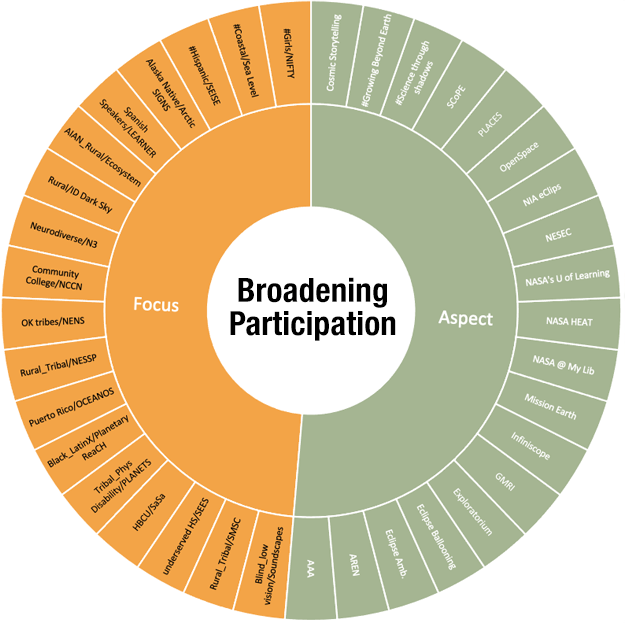
SciAct aims to serve historically underrepresented groups in STEM fields by delivering activities and experiences tailored to learners of particular backgrounds and learning styles. Teams also leverage subject matter experts with diverse backgrounds and career experiences. SciAct brings new learners to the process of science via projects and activities specifically designed to support community college, differently-abled, immigrant, indigenous, multilingual, neurodiverse, rural, and other disadvantaged, underserved, and underrepresented communities. This approach closely aligns with the national agenda for STEM education in its priority to increase diversity, equity, and inclusion in these fields. SciAct also leverages SMD’s attendance at targeted meetings and conferences to enhance the reach to these communities.
Science Activation and Earth Science
SciAct connects learners of all ages across all NASA science disciplines, including, Earth, Solar System, Space Experiments, the Sun, and the Universe. Table 2 lists the ten SciAct project teams that focus primarily on Earth science.
| Team Short Name | Lead Organization | Brief Description |
| AEROKATS/ROVER Education Network | Wayne Regional Educational Service Agency (Michigan) | Providing learners hands-on experiences with science instruments and NASA technology. |
| Arctic and Earth SIGNs | University of Alaska, Fairbanks | Engaging rural and indigenous youth, educators, and more in climate science. |
| Earth to Sky | NASA’s Goddard Space Flight Center | Helping interpreters and environmental educators access and use NASA climate science. |
| GLOBE Mission EARTH | University of Toledo | Enhancing K–12 science, technology, education, and mathematics (STEM) curricula with hands-on NASA and GLOBE learning activities. |
| Learning Ecosystems Northeast | Gulf of Maine Research Institute | Helping educators create NASA-powered explorations of local climate change impacts. |
| NASA Earth Science Education Collaborative | The Institute for Global Environmental Strategies (IGES) in partnership with several NASA centers | Enhancing STEM teaching and learning by creating engaging, meaningful STEM experiences. |
| OCEANOS | NASA’s Ames Research Center | Engaging Hispanic and Latino students in ocean science using NASA Earth observations. |
| PLACES | WestEd | Helping educators engage students in data-rich, place-based Earth science learning. |
| Sea Level Education, Awareness, & Literacy | NASA/Jet Propulsion Laboratory | Improving understanding of sea-level rise in historically underserved coastal communities. |
| SEES: Texas Space Grant Consortium | University of Texas at Austin | Increasing the number of high school students, particularly under-represented minorities, and those from under-served areas pursuing STEM college degrees. |
Table 2. SciAct project teams focused primarily on Earth science.
Conclusion
Through its intentional efforts to collaborate across projects and to broaden participation in NASA Science activities, SciAct is fully realizing NASA’s Explore Science 2020–2024 A Vision for Science Excellence Priority 4 Strategy to “increase the diversity of thought and backgrounds represented across the entire SMD portfolio through a more inclusive environment.” This article summarized the variety of means through which SciAct accomplishes this and highlighted 10 Earth-science-focused programs. Readers are encouraged to visit the Science Activation website and more fully explore how this program connects diverse learners of all ages with NASA science, content, and experts in ways that activate minds and promote a deeper understanding of our world. They will discover resources and opportunities to learn science and connect with SciAct teams to see how their science might be integrated into this impactful work.
Lin H. Chambers
NASA Headquarters
lin.h.chambers@nasa.gov
Kim E. Holloway
Science Systems and Applications, Inc.
kim.e.holloway@nasa.gov


























